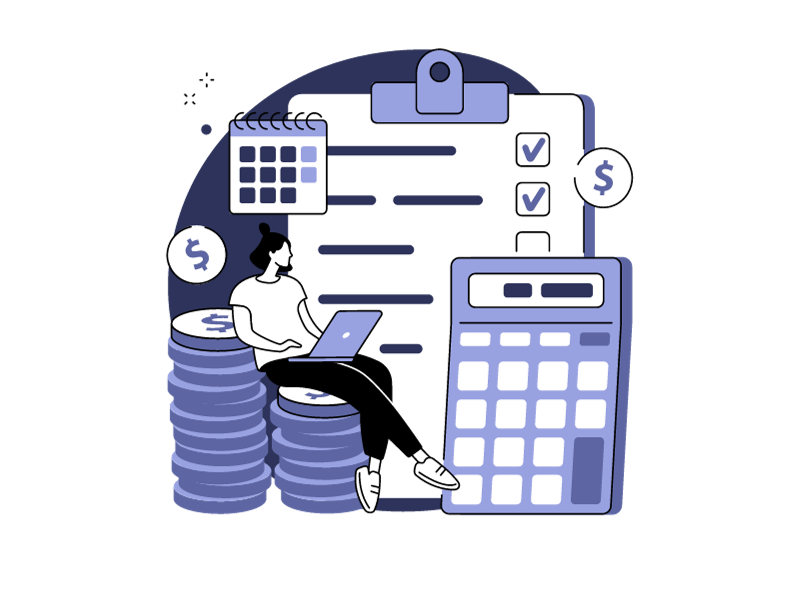

Conversion rate measures the percentage of visitors who complete a desired action on a site. This action can be anything from buying a product to subscribing to a newsletter or downloading an ebook. For example, you have an online store where visitors arrive every day. These visitors are part of your website traffic. But out of this group, who actually becomes a customer and makes a purchase? That's where conversion rate comes in!
CALCULATE CONVERSION RATE
Conversion rate is a measurement of performance. It measures the percentage of people who take action after interacting with your marketing content, whether it's a website, an ad, or an email. This figure can tell you a lot. For example, a high conversion rate generally indicates that your marketing target is well-defined and that your message resonates with your audience. Conversely, a low rate may mean that your message or product needs to be reworked to successfully convert visitors into customers. It's also important to understand that conversion rates aren't always linked to sales and revenue. A conversion could be downloading an ebook, signing up for a newsletter on a landing page, or even watching a video. What counts is that the person takes action!
| 📅 Total number of visitors | Total number of people who visited your site or page |
| 👤 Total number of conversions | Total number of visitors who took the desired action (purchase, registration, etc.) |
| 📊 Conversion rate (%) | Percentage of visitors who took the desired action compared to the total number of visitors |
HOW TO CALCULATE CONVERSION RATE
Add the total number of visitors and then the total number of conversions following your campaign. Your conversion rate will then be displayed by clicking on the button in the blink of an eye!


OUR TIPS FOR OPTIMIZING YOUR CONVERSION RATE
Optimizing your conversion rate isn't just about creating stunning visuals and waiting for your design skills to take effect. No, in digital marketing, the conversion rate is a clever mix of various best practices.
- Propose unique offers: whether it's special money-saving discounts, free shipping, or a bonus product, these ads can really entice visitors to take action.
- Monitor every page of your site for mobile-friendliness: make sure that your site is optimized for mobile devices. A large proportion of traffic comes from smartphones, so if your site isn't adapted, you could be losing out on a lot of opportunities!
- Use retargeting: visitors who leave your site without converting can be targeted with retargeting ads. Think about optimizing their CTR! This will encourage them to come back and complete the action they've started.
- Minimize loading time: a site that takes a long time to load can discourage visitors and prompt them to leave your pages.
CONVERSION RATE FAQ
What’s the average conversion rate?
The average conversion rate is a metric that helps companies understand the effectiveness of their marketing actions or websites. Expressed as a percentage, it’s calculated by dividing the number of successful actions (purchases, registrations, etc.) by the total number of visitors or participants.
How do you calculate conversion rate in ecommerce?
To calculate conversion rate in ecommerce, the standard formula is to divide the number of successful transactions by the total number of unique visitors to the site, then multiply the result by 100 to obtain a percentage. So, if an ecommerce company recorded 300 sales and was visited by 10,000 unique users over a given period, the conversion rate would be (200/10,000) x 100 = 3%.
Why does the break-even point matter?
In communications, conversion rate refers to the proportion of individuals who take the desired action after being exposed to a message or campaign. As with CPA, this rate is often measured to assess the impact of initiatives such as advertising campaigns, public relations actions, document downloads, social network account subscriptions, etc. The conversion rate in communications isn’t limited to ecommerce or marketing campaigns. Here are a few other applications where this metric is useful:
- Social networks: measurement of the effectiveness of a post or campaign in encouraging users to engage, whether through likes, shares, or comments.
- Public relations: evaluation of the impact of a press release or blog post in terms of reach and engagement, such as shares, mentions, or references in other media.
- Email marketing: evaluation of the number of recipients who open an email and perform a desired action, such as clicking on a link or filling in a form.
- SMS campaigns: measurement of the proportion of recipients who respond to a call to action in a text message, such as using a promotional code.
- Live chat and chatbots: analysis of the number of visitors who engage in a conversation and achieve a specific objective, such as getting answers to their questions or making a purchase.
- In-person events: measurement the effectiveness of booths at trade shows or conferences, by calculating the number of leads (CPL) or contacts obtained in relation to the total number of visitors.
Create your online store with Wizishop
Access, browse and test all of our features with our 7-day trial, no strings attached





